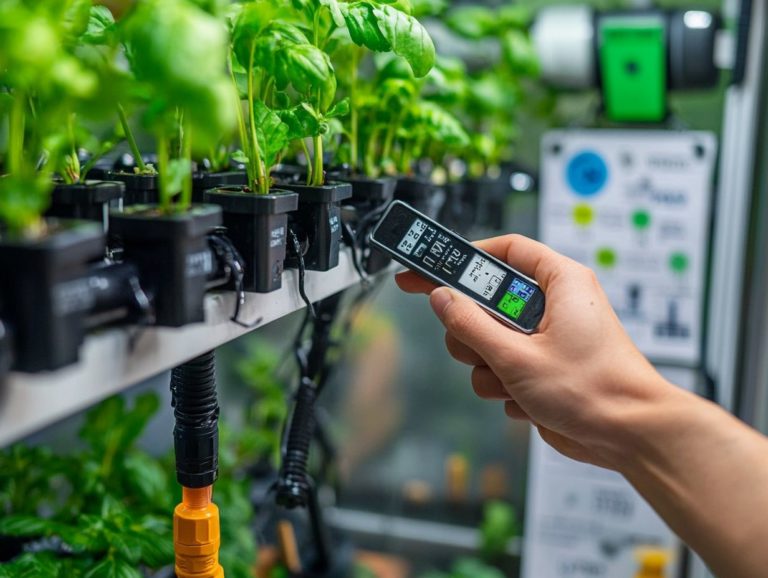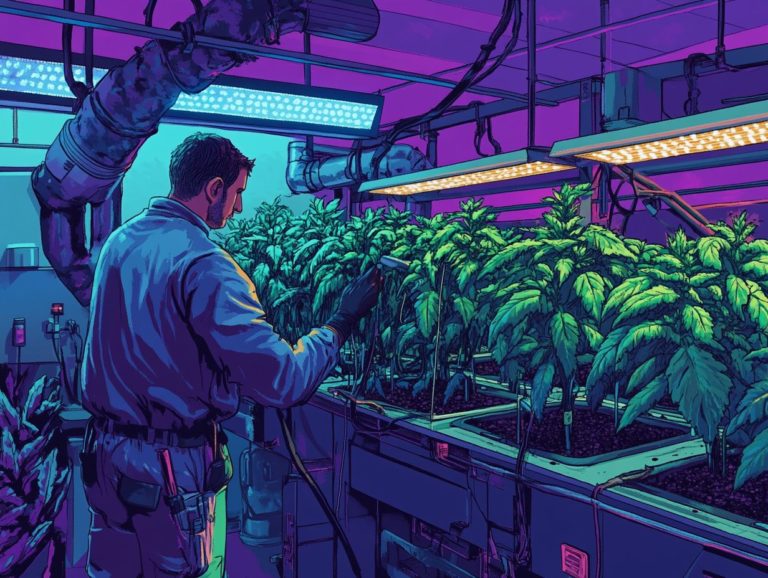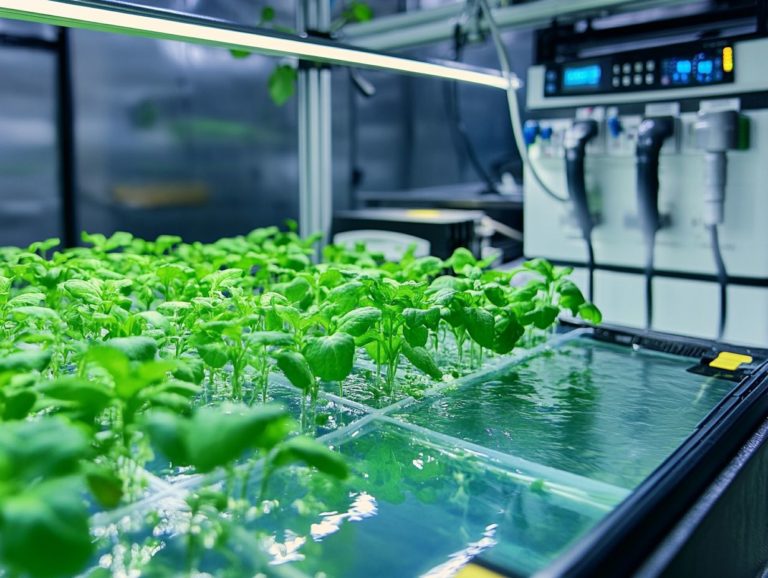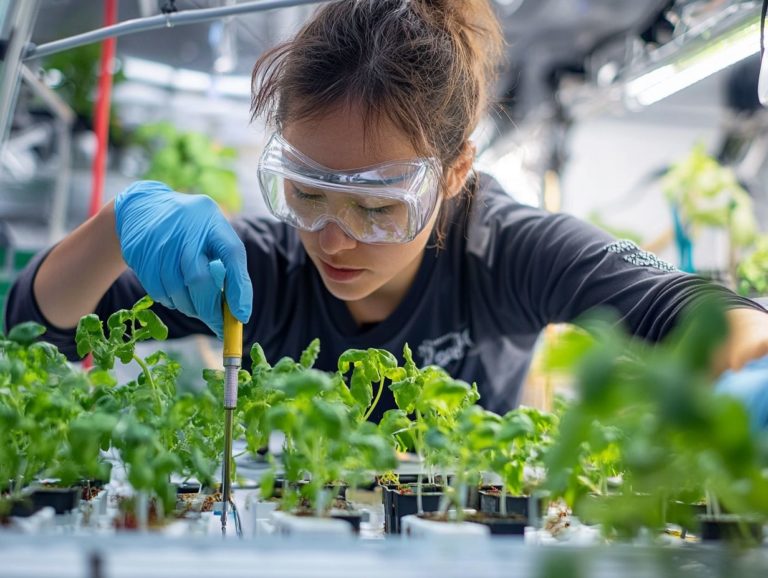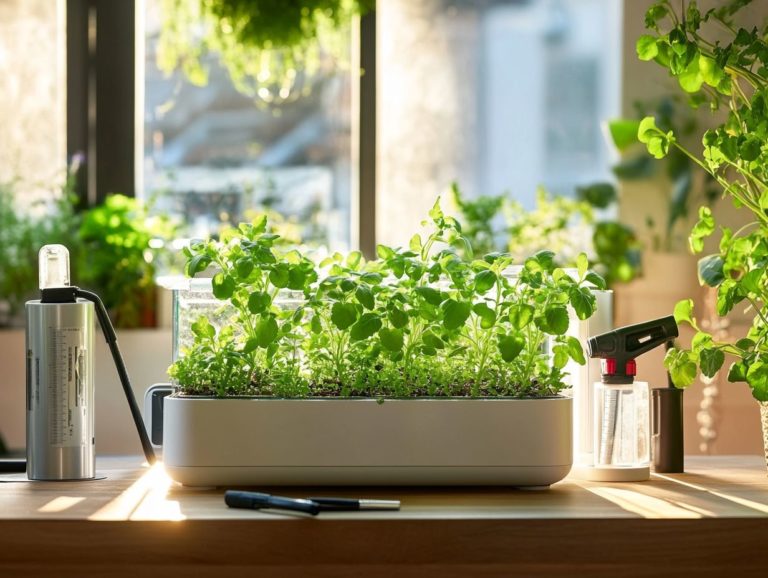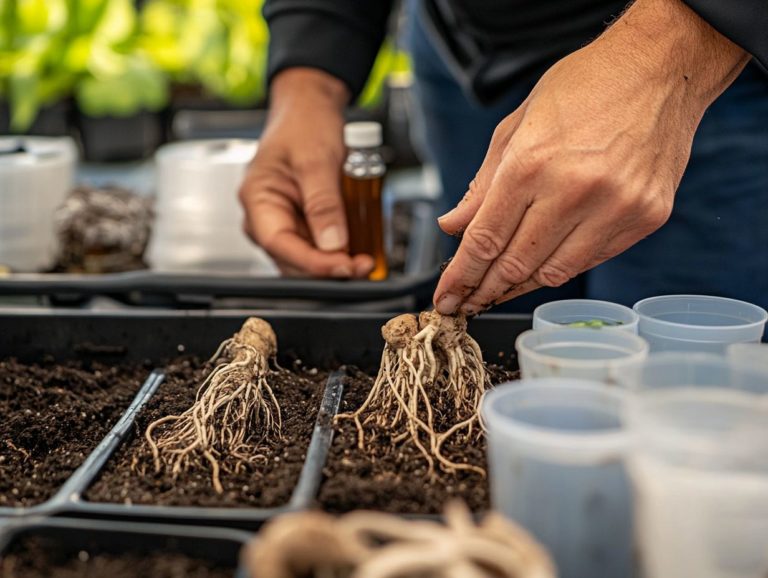Identifying Issues with Hydroponic Pumps
Hydroponic systems depend significantly on pumps to circulate nutrient-rich water, making these components essential for the health of your growing crops.
Hydroponic pumps, like any mechanical system, can face various issues that could potentially interrupt your garden’s growth cycle. Seedling problems such as wilting plants and dead roots can arise from pump malfunctions.
This article delves into the common challenges associated with these pumps, provides troubleshooting steps to resolve them, and outlines preventive maintenance tips to ensure smooth operation while addressing issues like system clogging and algae infestation.
You’ll also discover how to select the right pump tailored to your specific hydroponics system setup, setting the stage for a flourishing garden!
Contents
- Key Takeaways:
- Common Issues with Hydroponic Pumps
- Identifying and Troubleshooting Pump Problems
- Preventive Maintenance for Hydroponic Pumps
- Choosing the Right Pump for Your Hydroponic System
- Frequently Asked Questions
- What are some common issues with hydroponic pumps?
- How can I tell if my hydroponic pump is clogged?
- What should I do if my hydroponic pump is leaking?
- What can cause airlocks in hydroponic pumps?
- How often do hydroponic pumps need to be replaced?
- Are there any preventative measures to avoid issues with my hydroponic pump?
Key Takeaways:
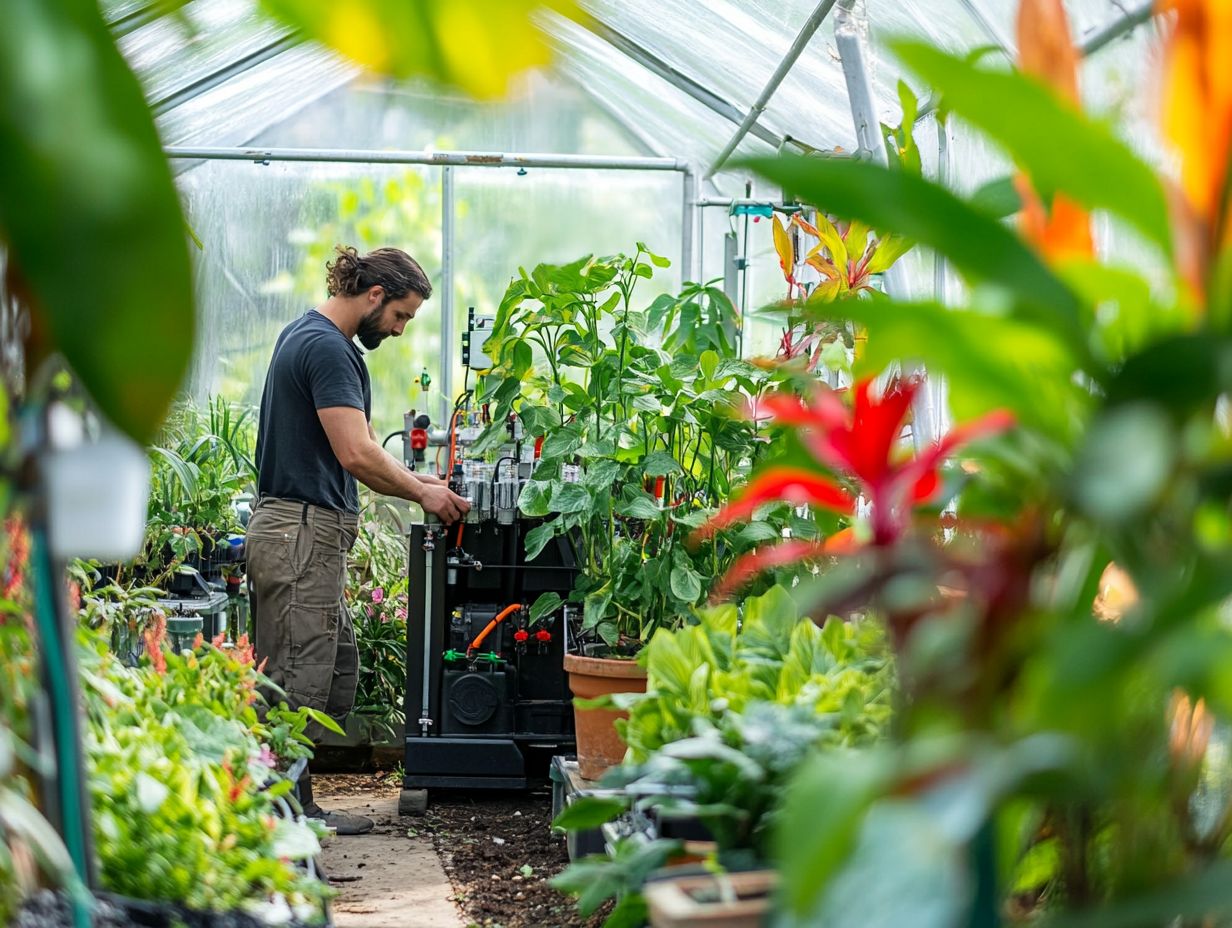
- Regular maintenance helps catch pump issues early!
- Routine cleaning can prevent clogs and keep your pumps running smoothly.
- Choose a pump that fits your system’s needs for the best results!
What are Hydroponic Pumps?
Hydroponic pumps are absolutely essential in hydroponics systems. They help deliver water and nutrients to your seedlings and crops without the need for soil. These pumps maintain optimal conditions for plant growth and ensure proper aeration through air pumps.
Grasping the details of hydroponic pumps is crucial to prevent issues like system clogging and nutrient deficiencies, which can undermine plant health and yield. Additionally, understanding electrical issues in hydroponics is essential for maintaining optimal performance.
There are various types of hydroponic pumps, each designed with unique functions tailored to meet specific system requirements. For example, submersible pumps are a popular choice in deep water culture systems, as they thrive in wet environments and easily deliver nutrients to your plants. In contrast, inline pumps are best used in systems that demand robust circulation, efficiently pushing nutrient solutions through tubing.
These pumps work in harmony with air pumps to maintain optimal oxygen levels, fostering healthier root systems. Selecting the right hydroponic pump goes beyond mere functionality; it requires an understanding of the specific crops and conditions at play. Different plants may have varying requirements regarding flow rates and nutrient concentrations to truly thrive.
Common Issues with Hydroponic Pumps
Common issues with hydroponic pumps can significantly affect plant health and overall system effectiveness, resulting in dead roots, wilting plants, and disappointing yields. It’s important to be aware of potential challenges like algae infestations and pump malfunctions, which can disrupt nutrient delivery and water circulation.
By being proactive, you can ensure your hydroponic system thrives!
Possible Causes and Consequences
Possible issues with hydroponic pumps can stem from a variety of sources, including pump malfunctions, inadequate air circulation, and nutrient deficiencies. If left unaddressed, these problems can lead to serious consequences, like stunted growth and unwelcome pest infestations.
By understanding these potential pitfalls, you can implement preventive measures and effectively manage any issues that arise.
Mechanical failures, such as worn-out impellers, blockages in the piping, or electrical problems, can disrupt the flow of nutrient solutions, putting undue stress on your plants and compromising their overall health.
Environmental factors also play a pivotal role in pump performance. Extreme temperatures can accelerate pump wear, while insufficient light can weaken plant vitality, making them more vulnerable to symptoms like yellowing between leaf veins (interveinal chlorosis) and leaf tip damage (tip burn).
It’s important to monitor these variables closely to mitigate any adverse effects, ensuring that your hydroponic system thrives and achieves maximum productivity.
Identifying and Troubleshooting Pump Problems
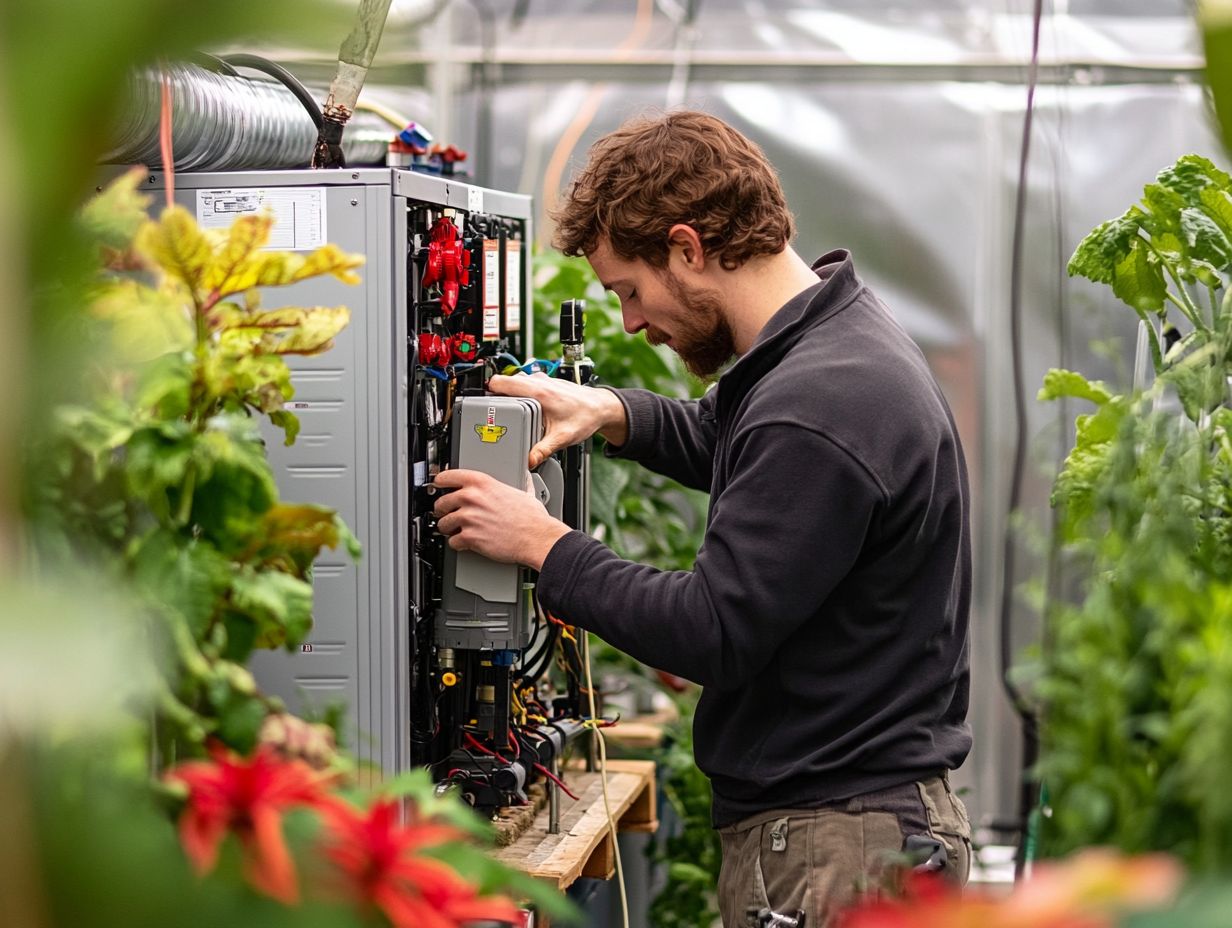
Identifying and troubleshooting pump problems in your hydroponics system is essential for maintaining the health of your crops. Issues such as nutrient lockout and rust-like spots on leaves can indicate underlying pump malfunctions.
As a grower, it’s vital for you to remain vigilant and well-informed about the signs of pump-related issues. This proactive approach will help you ensure optimal plant health and maximize productivity.
Steps to Take for Diagnosis and Repair
To diagnose and repair pump issues in hydroponic systems, follow a systematic approach. Start by utilizing effective solutions like hydrogen peroxide or bleach for sanitation. This ensures that your crops receive proper nutrient delivery.
This proactive strategy not only safeguards your plants but also helps prevent complications like algae growth or system clogs.
Begin by inspecting the pump for any visible signs of wear or damage. You might need basic tools like a multimeter a tool that measures electrical current or a screwdriver for this task. Once you’ve addressed any physical concerns, check the power supply and connectivity.
Regular maintenance, including a thorough cleaning of the entire system, is essential for avoiding future issues.
Incorporating cleaning agents like hydrogen peroxide can effectively eliminate harmful bacteria, while bleach acts as a powerful disinfectant. This ensures that nutrient flow remains uninterrupted.
By adhering to these steps, you can maintain an efficient hydroponic system that fosters healthy crops and reduces the likelihood of recurring pump failures.
Preventive Maintenance for Hydroponic Pumps
Engaging in preventive maintenance for hydroponic pumps is key to keeping them running like new! This practice minimizes problems like calcium buildup, pH imbalances, and fluctuations in electrical conductivity (EC).
By committing to regular maintenance, you can effectively avert potential risks and ensure that nutrient delivery remains consistently optimal.
Tips for Keeping Pumps in Good Condition
Keeping your hydroponic pumps in excellent condition is essential for the overall health of your system. This involves regular cleaning, effective troubleshooting, and implementing pest management strategies to prevent infestations.
Aim to clean your system weekly to remove any debris or mineral buildup that could hinder pump efficiency. It’s equally important to inspect your filtration systems to ensure optimal water flow and nutrient dispersion.
If you notice any strange noises or a drop in performance, troubleshooting becomes paramount. Many common issues stem from blockages or worn components that require your attention.
Incorporate pest management measures to safeguard your plants while also enhancing pump performance by reducing potential damage from pests.
These preventive strategies cultivate an environment where both your plants and hydroponic system can truly thrive. This leads to robust crops and efficient nutrient use.
Choosing the Right Pump for Your Hydroponic System
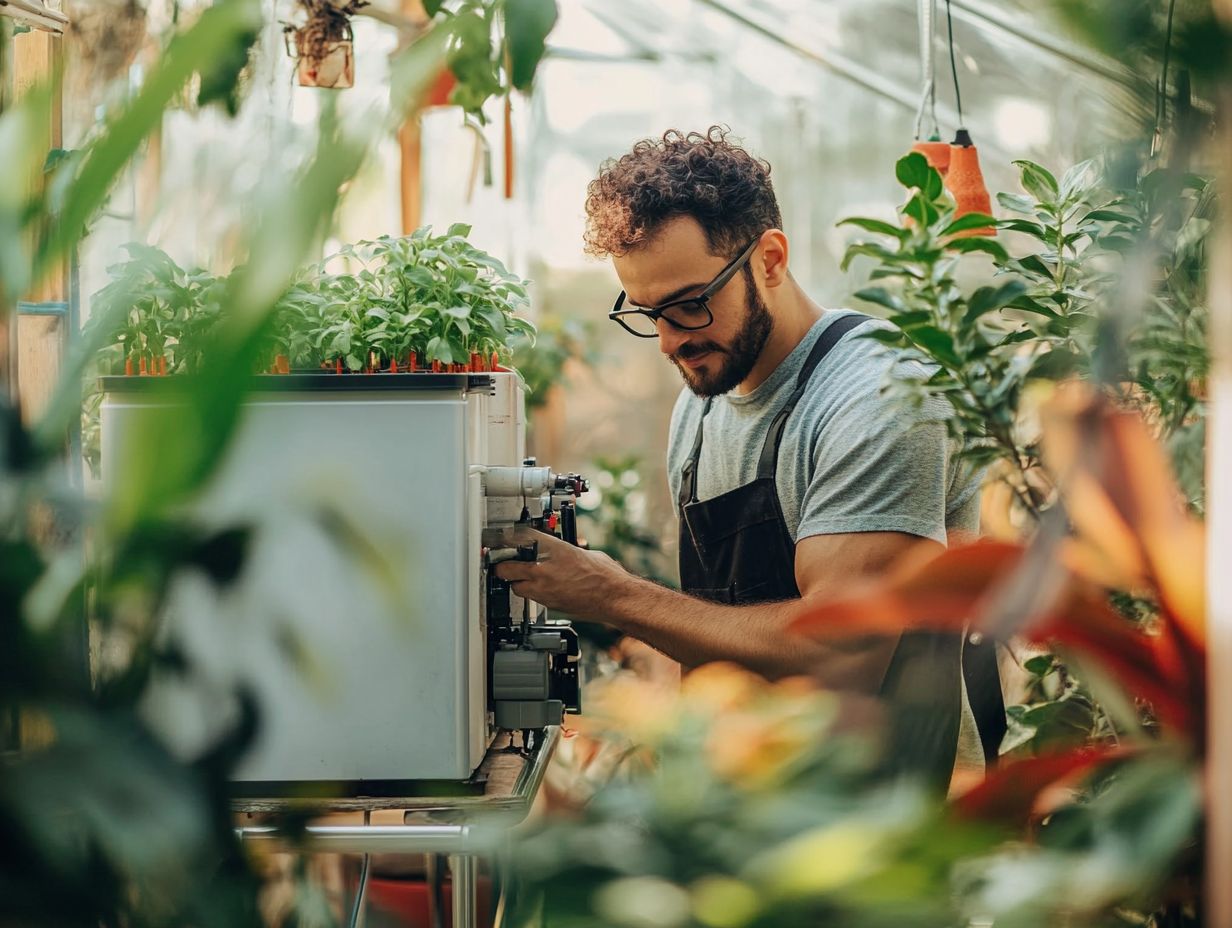
Selecting the right pump for your hydroponic system is crucial for ensuring that nutrients are delivered effectively and that optimal conditions are maintained. This includes ideal light and temperature settings.
Consider factors such as your system s specific requirements, pump capacity, and compatibility with the crops you intend to grow. These elements significantly influence your decision-making process.
Don t wait! Start your pump maintenance today for a thriving hydroponic garden!
Factors to Consider and Recommended Options
When selecting a pump for your hydroponic system, there are several key factors to consider: system compatibility, water circulation needs, and nutrient delivery to keep your plants thriving. With various pump options available for different hydroponic setups and crop types, choosing wisely is essential.
Evaluate the desired flow rate since plants have unique water intake requirements. The pressure is equally crucial; it determines how effectively your system distributes nutrients throughout the grow area. Don t underestimate the importance of energy efficiency, especially for large-scale operations continuous pump use can result in significant electricity costs.
For example, submersible pumps like the EcoPlus Hybrid are excellent for deep water culture systems, offering a steady flow with low energy consumption. Conversely, diaphragm pumps such as the Shurflo excel in delivering high pressure, making them ideal for nutrient film techniques where precision is paramount. For those looking to optimize their setup, troubleshooting hydroponic system automation can provide valuable insights.
By understanding these factors and managing nutrient ratios like potassium and phosphorus, you can make informed choices that elevate your hydroponic productivity.
Frequently Asked Questions
What are some common issues with hydroponic pumps?
Common issues with hydroponic pumps include clogs, leaks, airlocks, and electrical malfunctions, which may be exacerbated by poor air circulation and algae infestations.
How can I tell if my hydroponic pump is clogged?
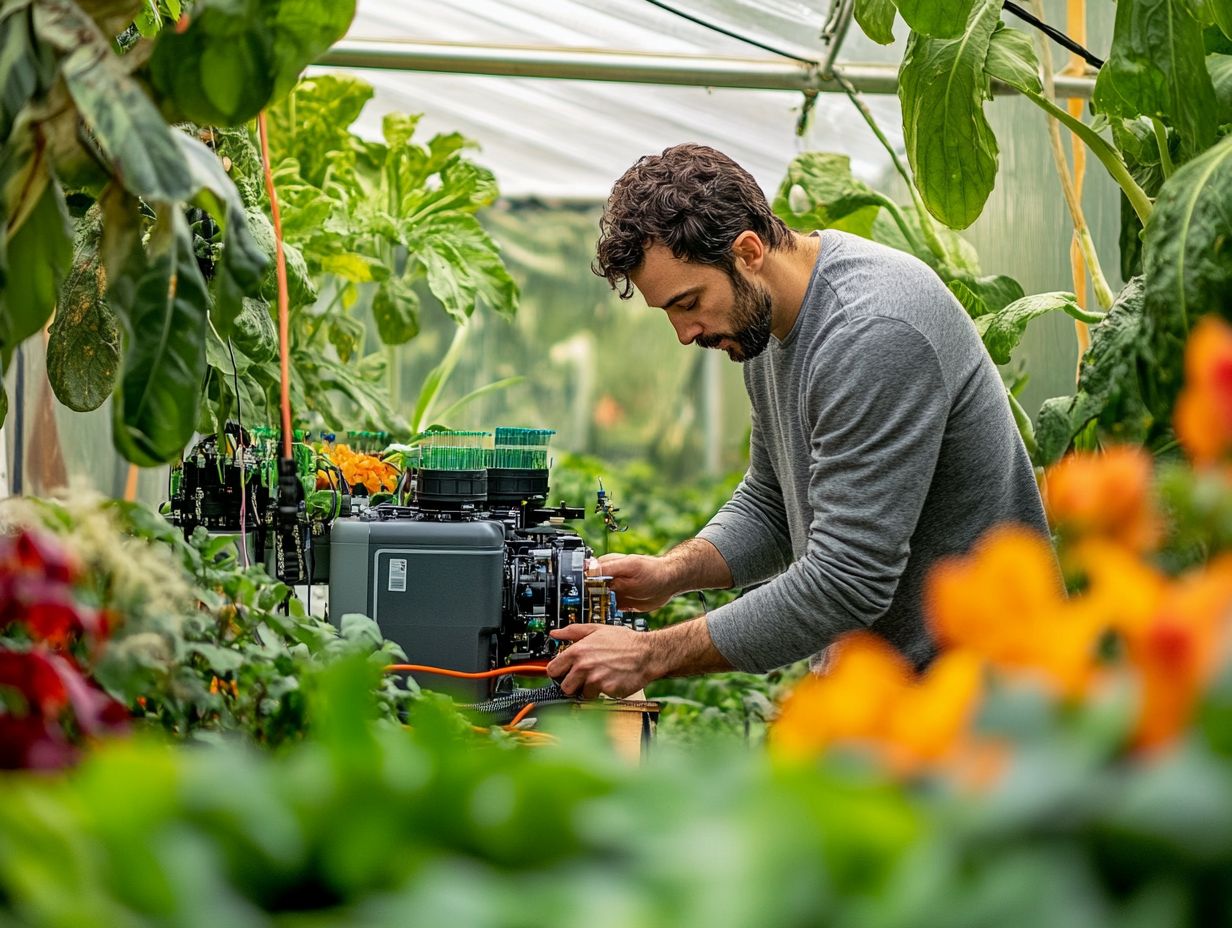
If your hydroponic pump is clogged, you may notice a decrease in water flow or pressure, or hear a grinding noise coming from the pump.
What should I do if my hydroponic pump is leaking?
Is your hydroponic pump leaking? First, check all connections for loose fittings or cracks. If the leak persists, it may be time to replace the pump. And don’t forget to check that your crops are healthy and not suffering from nutrient deficiencies due to poor water flow.
What can cause airlocks in hydroponic pumps?
Airlocks in hydroponic pumps can be caused by improper installation, low water levels, or a blockage in the pump. Factors such as light and temperature can also contribute to issues like curling leaves and rust-like spots.
How often do hydroponic pumps need to be replaced?
The lifespan of a hydroponic pump can vary depending on usage and maintenance, but they typically need to be replaced every 1-2 years. Regular monitoring of room temperature and pH levels can extend their lifespan.
Are there any preventative measures to avoid issues with my hydroponic pump?
Yes! Regularly cleaning and maintaining your hydroponic pump can help prevent clogs and malfunctions. Proper installation and monitoring are essential to avoid airlocks or leaks. Act now to ensure your system runs smoothly!

